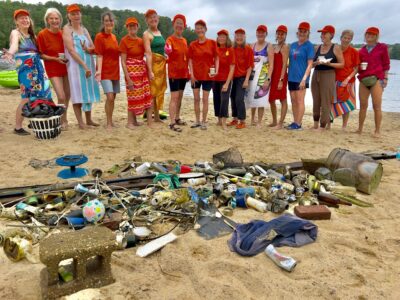This summer’s heat waves were overwhelming. Homeowners with a pool were lucky and could take a quick dip to cool off. However, this is a luxury for many as traditional backyard pools can be expensive to install and maintain. Fortunately, there are two cheaper and more sustainable options: plunge and natural pools.
In the U.S., states like California and Texas are dealing with extreme heat and drought. Large pools use substantial amounts of water and cost thousands of dollars.
With a more minimal design, plunge pools are perfect for those who want a backyard oasis without paying an arm and a leg.
They are typically only five feet deep and are ideal for those making a more concerted effort to conserve water. They require much less space, so less soil excavation, meaning fewer worries about erosion. The best part is the low maintenance cost, which doesn’t require extensive cleaning or renovations.
Plunge pools aren’t a new phenomenon. Historians have traced them back to Ancient Rome, where the Romans would place these five-foot-deep pools as part of their baths. British socialites built plenty of these in their cottages in the 18th century. In nature, these pools are found at the base of waterfalls, where erosion has created a swimming hole. A much more sustainable and cheaper version than the traditional options, plunge pools offer relief from the sun without hurting your wallet or the environment.
Natural swimming pools are another sustainable alternative for those interested in a backyard option that doesn’t drain your bank account or waste energy. Popularized in Austria in the 1980s, natural pools don’t use chlorine or generated heat. The outer rim of the pool is built with a “regeneration zone” aligned with cattails and water lilies. These water plants promote higher oxygen levels in the water and filter sediment and bacteria through rocks and gravel laid out in the regenerative zone.
A series of pumps bring water into the regenerative zone, and you can notice how the pool water is clean and pristine while the regenerative area is murkier. These natural pools eliminate the need for external generators, so less energy is necessary to heat them. They rely solely on the sun’s rays. Homeowners will have to skim the top of the pool for duckweed, but that’s nothing compared to cleaning traditional pools.
Biodiversity is another vital aspect of natural pools. The regenerative zone is designed to mimic a pond, so algae and aquatic plants will build up in the area while keeping the pool water clean.
Better yet, these ponds will attract insects like dragonflies, which eat mosquitoes, so there are fewer pests in your yard. You might get the occasional frog or turtle that makes the regenerative zone their home. While it may seem strange to have a full-fledged pond sitting adjacent to your swimming pool, it’s incredibly environmentally friendly.
Plunge and natural pools are perfect for those looking to host cocktail parties or backyard cookouts and want a small place where they can hang out and escape the heat. The minimalist design is ideal for tight suburban homes and doesn’t take up the whole yard. Both offer more eco-friendlier options for those considering taking the plunge and building a pool.





